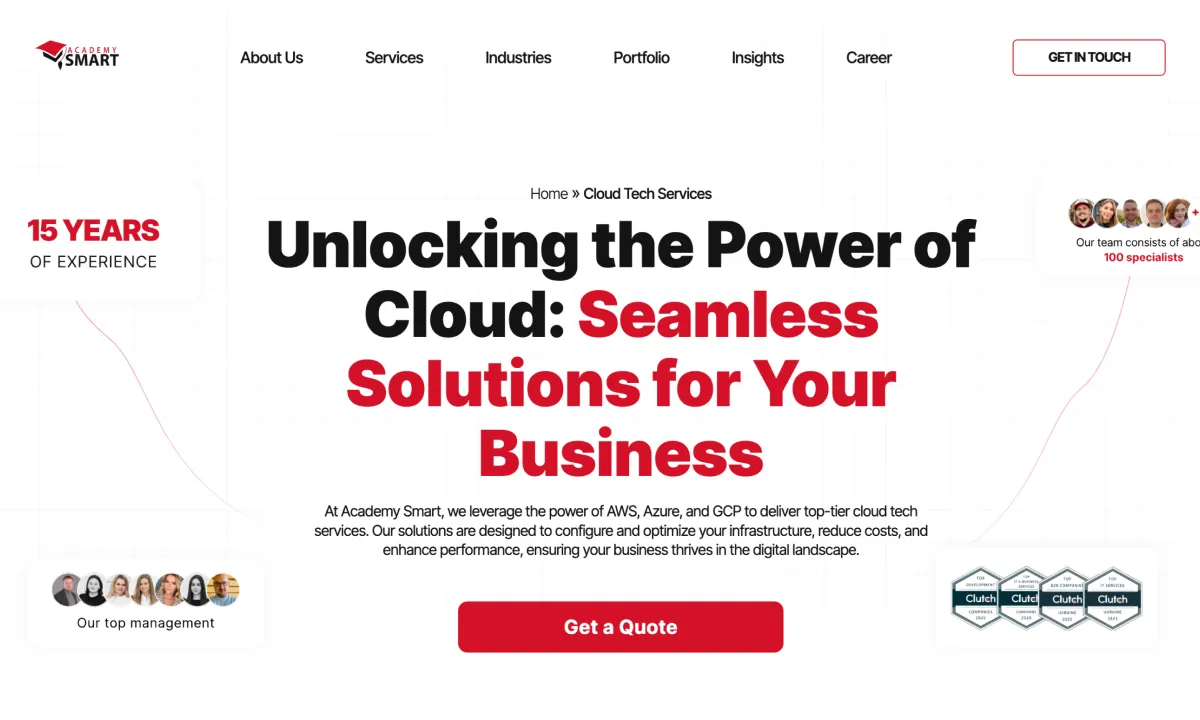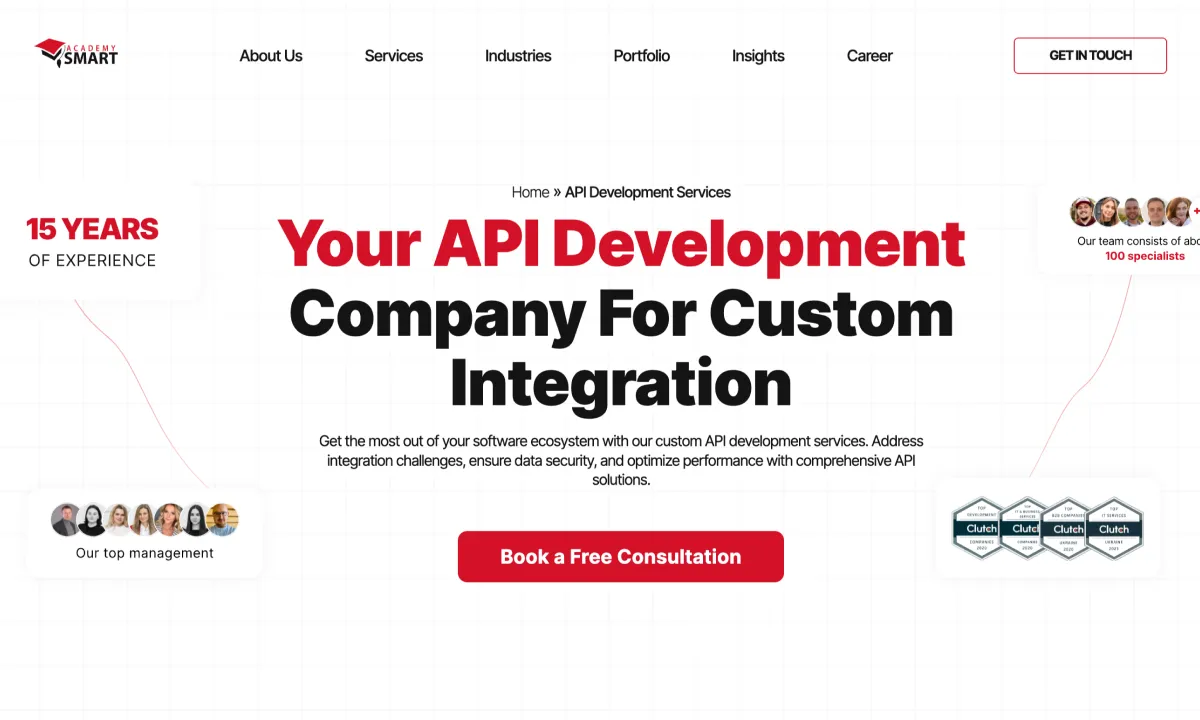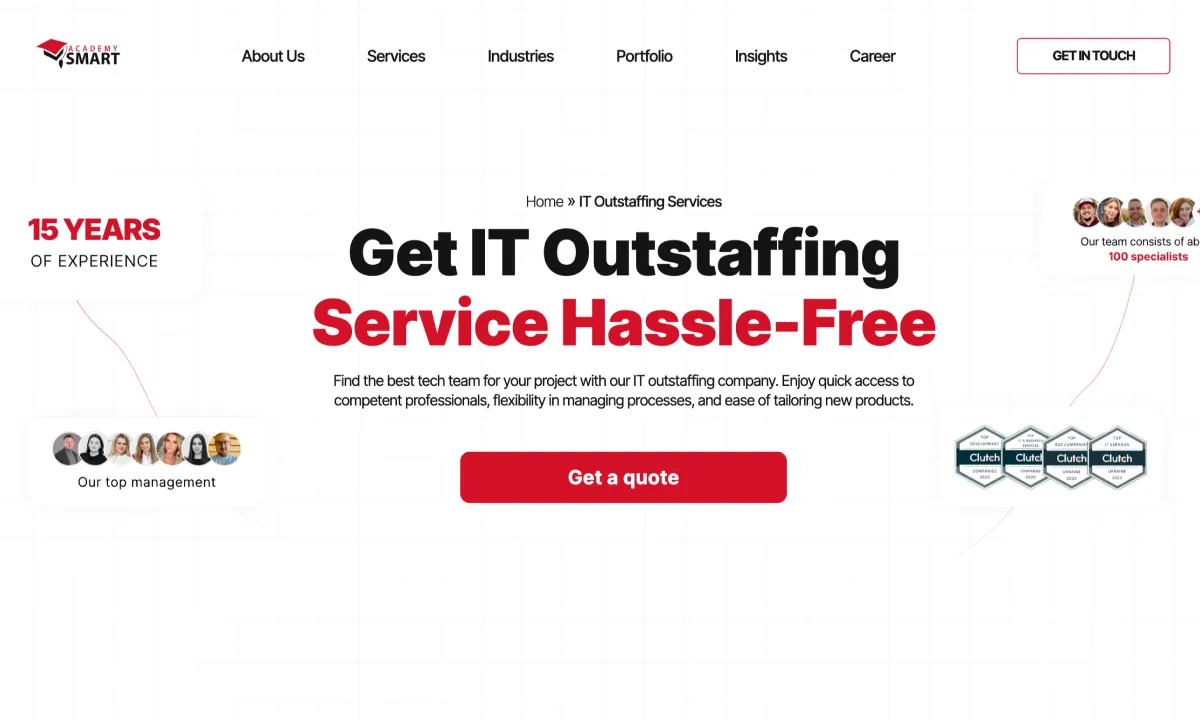
Application of Cloud Computing in Education
Contents
Introduction
Cloud computing application in education – what is the purpose and what are the benefits? With educational organizations worldwide moving to blended or fully remote E-learning due to the COVID-19 pandemic, the challenge of providing secure access and sufficient resources to support E-learning cloud solutions became even more important. Corporations and educational bodies alike need to host their training materials in easily scalable and protected environments to ensure the cost-efficiency of learning delivery.
Using cloud computing in E-learning is a great choice as it enables the educators to use cloud scalability, flexibility and security to support the main paradigm of E-learning — training accessible anywhere, at any moment, from any device. Running a cloud-based E-learning platform is one of the best decisions an educational body or corporate L&D department can make, and this article will showcase the benefits of delivering E-learning using cloud computing, along with the challenges that arise and the best practices for overcoming them.
Due to flexible data storage and management mechanisms, as well as robust security features, the cloud is the most widely used type of hosting in the EdTech industry. It enables educators to upload vast quantities of E-learning content in various types and formats (videos. texts, presentations, quizzes, questionnaires, etc.), host online classes and interact with their remote learners at the least possible cost.
Read also: Benefits of Multi-Tenant LMS

Impact of Cloud Computing on Online Education
The education of the 21st century must be easily accessible and digestible, on point, and repeatable. Thus, 5-minute-long videos with practical exercises to support the E-learning outcomes, which are delivered via a SaaS e-learning platform, are rapidly replacing 45-minute long lectures. There are several key differences between using cloud computing vs on-prem training solutions:
- Connectivity. Your learning materials are accessible over the internet, wherever and whenever your learners need them, instead of being restricted to the confines of a corporate or alma mater intranet.
- Improved collaboration. Educators can increase learner engagement and promote collaboration by integrating various social media, messengers and other communication tools with their cloud-based E-learning platforms via APIs.
- Inexpensive resource storage. Unlike with on-prem or dedicated remote servers, in the cloud you Pay As You Go, meaning you are billed only for the resources actually consumed. This PAYG model allows minimizing CAPEX and reducing OPEX. Thus said, storing your E-learning materials in the cloud is much cheaper, as compared to running an on-prem data center for this purpose.
- Accessibility and scalability. Cloud computing is built on Docker container technology, and every app or feature you need can be run in a container and scaled individually. This means your cloud-based E-learning platform is much less likely to freeze or lag under a heavy workload — it will scale up to meet the demand automatically.
- Upfront cost reduction. As we already mentioned, deploying a cloud-based E-learning solution is much cheaper, as compared to installing it on-prem. You have all the computing resources you need readily available, and many cloud computing offerings are free for 12 months (some are free for life), helping you kickstart your E-learning project or transition to the cloud with minimal costs.
- Built-in monitoring and analytics. Every cloud service provider offers in-depth monitoring and analytics systems and allows replacing them with open-source analogs of your choice. Thus said, you will have transparency and visibility into your cloud-based E-learning platform performance and resource usage.
These are the common benefits provided by cloud technology. Let’s now take a look at the benefits cloud computing brings to E-learning specifically.
Benefits of cloud computing in E-learning
What are the benefits of the cloud computing application in education informatization? Below are the advantages of applying cloud computing in E-learning.
1. Strong virtual classroom environments
When you run an on-prem system, you are always limited by its maximum resource allocation capacity and throughput of your infrastructure. In the cloud, these limitations are gone. Hosting a webinar, creating and uploading new training content, hiring experts to teach remotely instead of relocating them, running MOOCs for thousands of students and even enabling them to pass exams remotely with video and screen recording — all of this is possible in the cloud.
2. Ease of development
Developing new training materials or adding more features to your cloud-based E-learning solution is much faster and cheaper than doing so on-prem. This is due to the fact that cloud resources allow much faster video/audio rendering and encoding, creation of SCORM-compliant objects, etc., shortening the time needed to prepare new online courses. As for adding new features to your cloud-based E-learning platform, cloud computing supports DevOps tech data services as well, which allows automating multiple facets of software delivery, reducing the time and costs needed to update your solution.
3. Secure data storage
Cloud computing vendors like AWS, Azure of GCP provide multiple security features, as well as encrypting all your data in storage and in transit. Thus said, sensitive PII of your learners and staff is safer to store in the cloud, where no one can access them without permission (if you configured the cybersecurity features correctly, that is).
4. Applying innovative technology
Cloud computing platforms support all the latest tech innovations like AR/VR, Machine Learning and AI. This allows empowering your training with virtual laboratories and ML-based course content personalization. For example, learners can remotely conduct chemical or physical experiments using VR goggles, and save on consumables and commuting time, not to mention their physical safety should they make a mistake.

As for personalization, ML helps you adjust the course content, so people with relevant backgrounds are not forced to go through the basics along with the rest of the group and can study according to individual learning paths, greatly improving their experience and learning outcomes.
However, every coin has two sides and you have to pay attention to several important points.
Read also: Gambassa Learning management system
Cloud computing issues and challenges in education
What are the disadvantages of the cloud computing application in education? These are the underwater reefs of using cloud computing in E-learning along with the best practices on solving them.
1. Dependence on Internet Uplink
Naturally, both you and your learners will access the E-learning system over the internet. Should the uplink be unstable or bandwidth not sufficient, this will impact the system performance. The best solution here is to have a backup uplink you can switch to when the primary Internet provider shuts down due to crash or maintenance.
2. Less Control
When working with a SaaS E-learning platform, you receive its functionality as a service, as well as the computing infrastructure needed to support it. These are handled by your SaaS provider and cloud vendor respectively. On one hand, you cannot configure almost anything. On the other hand, you do not need to configure anything, so you are not handicapped by your IT dept workload and skill.
3. Vendor Lock-in
Deploying an E-learning solution to the cloud is no easy feat and you will typically have to start from scratch, should you make a mistake when choosing the LMS or cloud vendor. Thus, partnering with a reliable E-learning Managed Services Provider beforehand is the crucial step of your cloud transition journey.
4. Security
To reap all the benefits of cloud computing you should instate, enforce and uphold a strict cybersecurity policy. Due to the cloud architecture, sometimes a single set of credentials is enough to gain access to a large portion of your digital assets. Thus, consider implementing a strong password policy, two-factor authentication, or MDM management with the help of your MSP to offset multiple security concerns. Infrastructure security will be handled by the cloud vendor.
5. Upfront Costs
While cloud migration is all about long-term cost reductions, it does not come for free and will require certain upfront investments of time, effort and money to go as planned. Your staff will have to be retrained to use cloud services, and moving all the data and learning materials to the cloud will take some time — but once configured it will work on in the future.
Cloud computing application in education
IT Company Academy Smart has delivered a purpose-built cloud-based LMS system that will allow the customer to promote the content and interactive videos he creates, license the LMS to content resellers and manage the pipeline. Initially, the Customer planned to use Moodle as the main ground for the future LMS system.
Considering the challenge of building a multi-tenant system, and based on the Academy Smart’s team experience in LMS development, we advised the Customer against using Moodle as the main technology for such type of LMS system. This is not the best solution, because multi-tenancy functionality is very hard to implement with Moodle.
We had proposed 3 ways of LMS development, explaining the pros and cons of each one:
- Moodle / IOMAD
- Multi-instance architecture (Moodle-based)
- Custom application
After considering all pros and cons of each option, the Client decided to go with developing a purpose-built solution from scratch. In order to proceed with LMS development, our IT team has created:
- Complete specification of the product to be built
- Project plan with the Scope of Work
- Design web application with mobile version
- Project timeline
The Customer got a robust, feature-rich and fully-functioning E-learning Management System developed from scratch and deployed to Amazon servers.
Summary
Due to the immense benefits of using cloud computing in E-learning, more and more educational organizations and corporate L&D departments move their workloads to the cloud. From K-12 schools to large universities, from startups to global enterprises — a cloud-based E-learning platform is the best choice to ensure cost-efficiency, security and scalability of operations, as well as providing positive learning outcomes. All of this is possible, however, only when you select a trustworthy MSP to help you build and run an E-learning cloud solution.
Academy Smart IT company has 10+ years of expertise in developing E-learning IT solutions. Watch a series of explainer videos about E-learning platform development on our Youtube channel to learn how LMS may help to deal with nowadays business challenges!
P.S. If you are interested in creating a unique Learning Management System for your needs,
GET OUR FREE WHITEPAPER “How to create a user-friendly LMS”
If you want to learn more about the cloud computing application in E-learning, please contact Academy Smart and we will be happy to discuss your tasks. Book a call and let’s talk business!
Cloud computing application in education: Frequently Asked Questions
What is cloud computing in e-learning?
Cloud computing is the latest and the most fast- growing technology that uses the Internet and central remote servers to provide applications and data. Used in LMS in education.
What are the benefits of cloud computing for students?
- Savings On Textbooks.
- Update of educational material.
- Easy access.
- Data security.
Book a free consultation

Reach out to start talking today!











